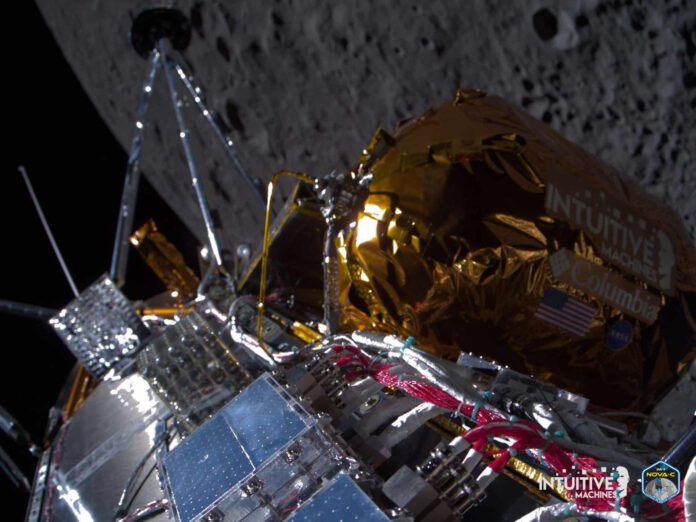
Last night, the American company Intuitive Machines successfully landed the unmanned moon lander Nova-C, nicknamed Odysseus, on the moon. This is a unique event: not only is this the first moon landing by a commercial company, but it also marks the first time in more than half a century that Americans have reached the moon.
NASA Reveals Historic Moment
NASA announced the news at 00.39 local time. Through a livestream, everyone could watch the decisive moment along with the control room of the American space organization. Up until now, only governments have managed to set foot on the moon.
The tension was high as to whether everything would go smoothly. After all, it’s no small feat to decelerate from a speed of 1.8 kilometers per second after a 400,000-kilometer journey and land upright in a predetermined spot near the moon’s south pole.
Fully Autonomous Landing
In the final minutes before the landing, Odysseus had to manage everything on its own: as planned, the fully autonomous system took over. But after fifteen long minutes of silence, the mission control team still heard nothing. Once the landing has been initiated, there’s nothing they can do but wait and hope. Then a signal came in. Weak but enough to trigger a liberating round of applause. The landing vehicle, affectionately known as ‘Odie,’ landed in an impact crater called ‘Malapart A’, about 300 kilometers from the moon’s south pole. The landing didn’t go entirely according to plan due to issues with the laser-guidance system (LiDAR). However, the LiDAR backup system took over.
An elated NASA employee declared on X, “Your order has been delivered to the moon!” Steve Altemus, the head of Intuitive Machines, also chimed in: “Welcome to the moon. It was nail-biting, but we’re on the moon’s surface and we’re broadcasting a signal.”
Weak Signal due to Blockage
A few hours later, there was more good news from the company. “Odysseus is standing upright and starting to transmit data. The first photos of the moon’s surface are being downloaded,” announced Intuitive Machines. However, the incoming signals are weak. It appears the spacecraft landed next to a crater wall or large boulder, or something else blocking the antenna. Such a problem could hinder Odysseus’s primary mission, which involves using the onboard equipment for scientific research.
Malapart A
The Nova-C was launched from the famous Cape Canaveral in the U.S. state of Florida. The craft was launched with a Falcon 9 rocket by SpaceX, Elon Musk’s space company, and forms part of NASA’s Commercial Lunar Payload Services (CLPS). By collaborating with private companies, the space organization aims to reduce costs and gather and distribute a substantial amount of knowledge for manned moon trips. The ultimate goal is to establish bases on the moon for ferrying people back and forth. The polar crater Malapart A is one of the possible locations for this endeavor.
The Odysseus isn’t very large. It stands about 4 meters high and weighs around 700 kilos. Odie has aluminum legs and can carry a payload of 130 kilos. The majority of the payload comprises NASA research material, but there are also parts from commercial parties. There’s even a piece of art by a global artist, Bram Reijnders, onboard, albeit on a chip.
Charged Particles from the Sun
Odysseus is scheduled to conduct research over the next seven days on the effect of charged solar particles on the moon’s surface, in preparation for manned moon missions. On the moon, people will be fully exposed to these particles, as there is hardly any protection from a magnetic field, like on Earth.
Below is one of the first photos from Odysseus: a moon crater with a diameter of about 50 kilometers and mountains in the middle.











